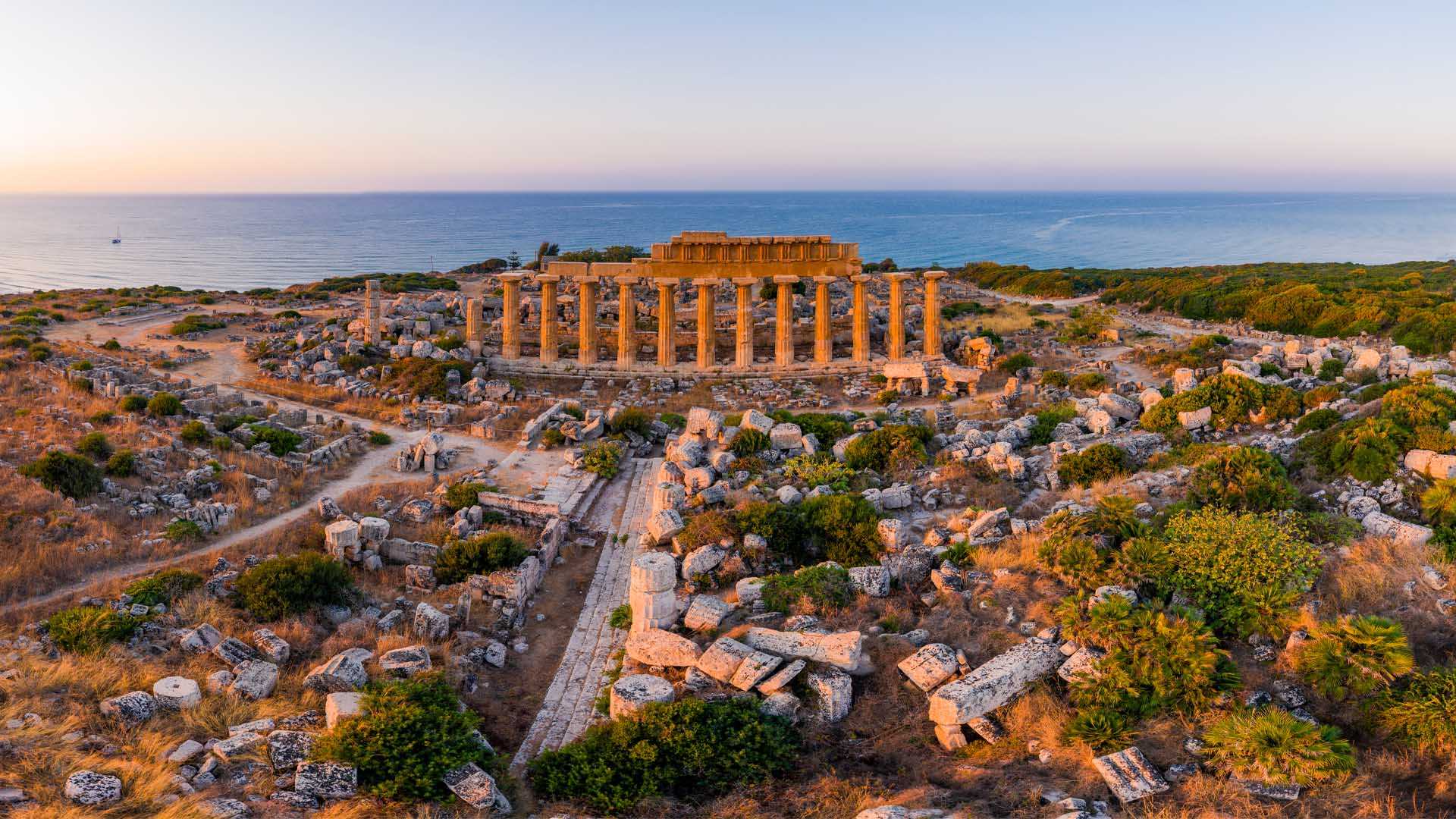标签 神庙 下的文章
哈索尔神庙,邓德拉神庙群,基纳,埃及 Temple of Hathor, Dendera Temple Complex, Qena, Egypt (© Nick Brundle Photography/Getty Images)
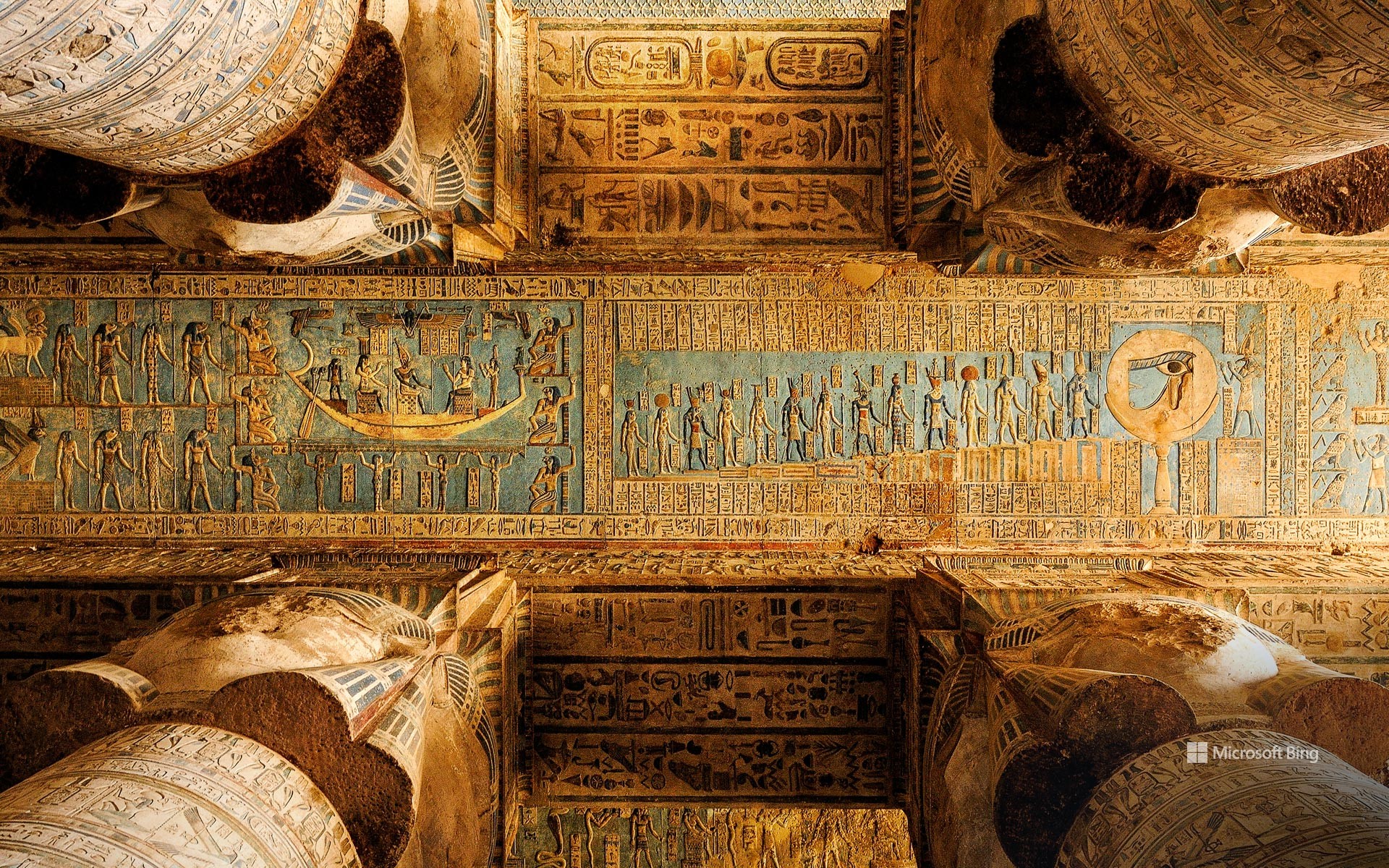
哈索尔神庙,邓德拉神庙群,基纳,埃及 Temple of Hathor, Dendera Temple Complex, Qena, Egypt (© Nick Brundle Photography/Getty Images)
立足现在,发掘过去 Uncovering the past for the present
国际考古日
今天,在国际考古日,深入挖掘你内心的印第安纳·琼斯或劳拉·克劳馥吧!该节日始于2011年,于每年10月的第三个星期六举办庆祝活动,旨在庆祝考古学对当今社会做出的贡献。其全球性的活动包括举办展览和动手挖掘遗迹,有些活动还会持续一个月。此外,许多美国国家公园、州立公园、历史地标和当地博物馆也会举办相关活动。
埃及是较早开展国际考古日活动的国家之一,从今天的图片中可以看到埃及哈索尔神庙的天花板。哈索尔神庙是丹德拉神庙群的一部分,也是保存最完好的古埃及神庙之一。虽然目前的神庙可以追溯到托勒密十二世和克利奥帕特拉七世(约公元前 50 年),但有证据表明,以前供奉埃及爱情和生育女神哈索尔的神庙可以追溯到数千年前。
International Archaeology Day
Today, dig deep and unearth your inner Indiana Jones or Lara Croft on International Archaeology Day. The event celebrates archaeology's benefits for society, and includes exhibits and hands-on excavations, some of which run throughout the month. Many US national and state parks, historic landmarks, and local museums also hold events.
Egypt is steeped in ancient history and home to many internationally renowned archaeological sites, including the Temple of Hathor, the ceiling of which can be seen in today's image. Part of the Dendera Temple Complex in Qena, Hathor is one of the best-preserved ancient Egyptian temples. While the current temple dates to Ptolemy XII and Cleopatra VII (around 50 BCE), evidence suggests that previous temples dedicated to Hathor, an Egyptian goddess of love and fertility, go back thousands of years earlier.
赫马库塔山上的神庙,汉皮,卡纳塔克邦,印度 Temples on Hemakuta Hill, Hampi, Karnataka, India (© Images of india/Alamy Stock Photo)
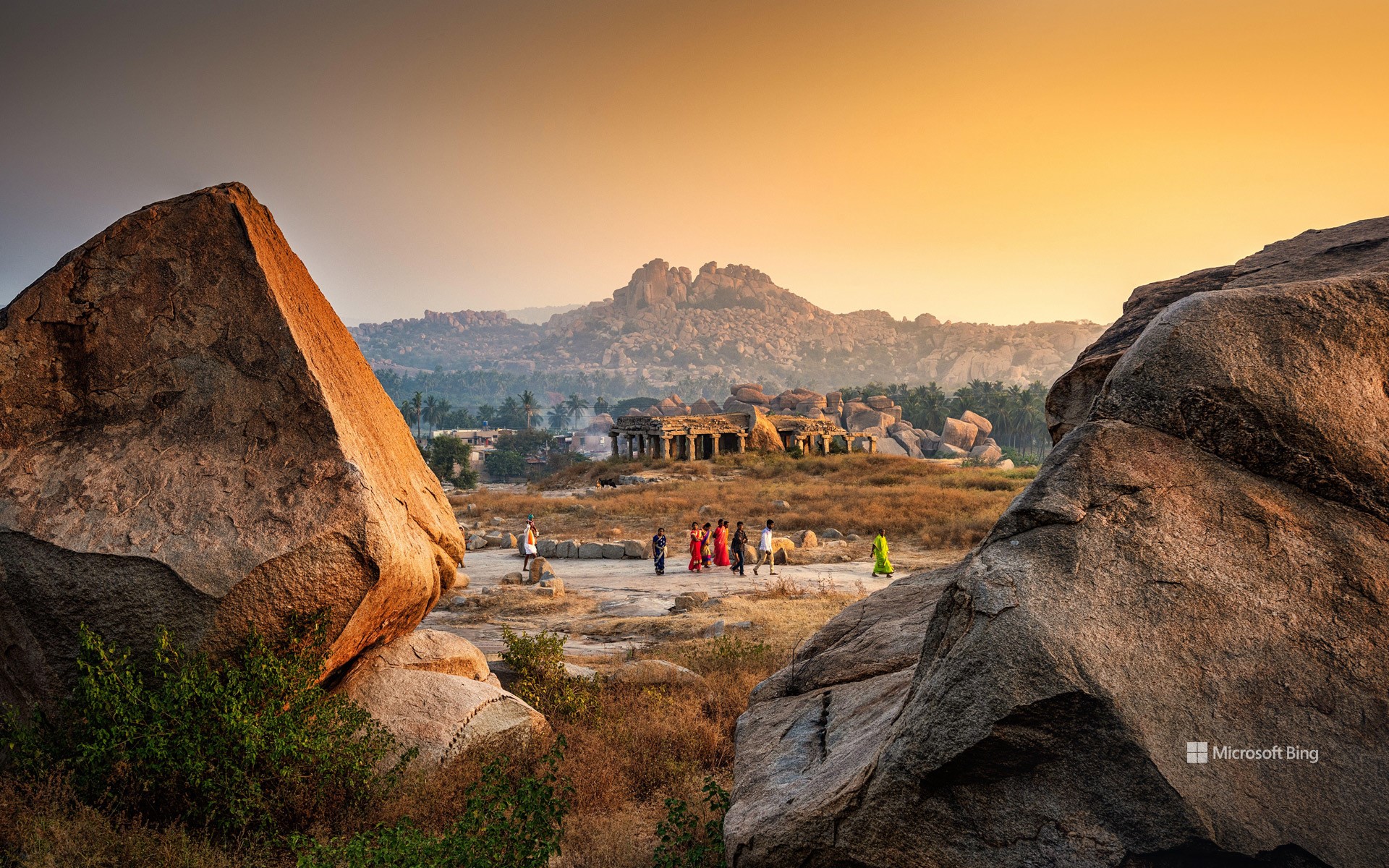
赫马库塔山上的神庙,汉皮,卡纳塔克邦,印度 Temples on Hemakuta Hill, Hampi, Karnataka, India (© Images of india/Alamy Stock Photo)
往事的低语 Whispers of the past
赫马库塔山,汉皮,印度
汉皮位于印度卡纳塔克邦,被联合国教科文组织列入世界遗产名录。从14世纪到16世纪,维查耶纳伽尔帝国统治着这片区域。而作为维查耶纳伽尔帝国首都的汉皮,自然留下了许多古迹群,例如古老的寺庙、雄伟的宫殿和满目苍夷的废墟。在克利希那德瓦·拉亚国王的统治期间(1509年至1529年),这座城市经历了大幅扩张,新建了很多具有艺术气息的建筑,吸引着来自世界各地的游客和商人。然而,1565年,维查耶纳伽尔帝国在塔利科塔战役中战败,汉皮也随之衰落。
如今,汉皮拥有约1000座古迹,现代背包客的到来让这座失落的城市重获新生。赫马库塔山是汉皮游客最多的地方之一,那里有许多保存完好的寺庙和神社。在山上游览时,游客们还可以顺便在湿婆神的维鲁帕克沙神庙停下来祈祷。
Hemakuta Hill, Hampi, India
Hampi is a UNESCO World Heritage Site in Karnataka, India. The group of monuments—ancient temples, majestic palaces, and intricate ruins—are remnants of the former capital city of the Vijayanagara Empire, which ruled much of South India between the 14th and 16th centuries.
The city grew during the reign of King Krishnadevaraya, from 1509 to 1529, and was famed for its art and architecture, attracting visitors from all over the world. However, Hampi lost its Midas touch in 1565, when it was destroyed after the defeat of its army at the Battle of Talikota.
Today, Hampi still houses about 1,000 ancient monuments and has become popular with modern backpackers, giving the lost city a new life. One of the most visited parts is Hemakuta Hill, with its well-preserved temples and shrines. While exploring the hill, visitors can stop by to offer prayers at the Virupaksha Temple, a pilgrimage site dedicated to Lord Shiva.
塞利努斯的神庙,西西里岛,意大利 (© Antonino Bartuccio/eStock)
意大利西西里岛康科迪亚神庙前的一棵橄榄树 An olive tree in front of the Temple of Concordia on the island of Sicily, Italy (© Alfio Finocchiaro/Shutterstock)
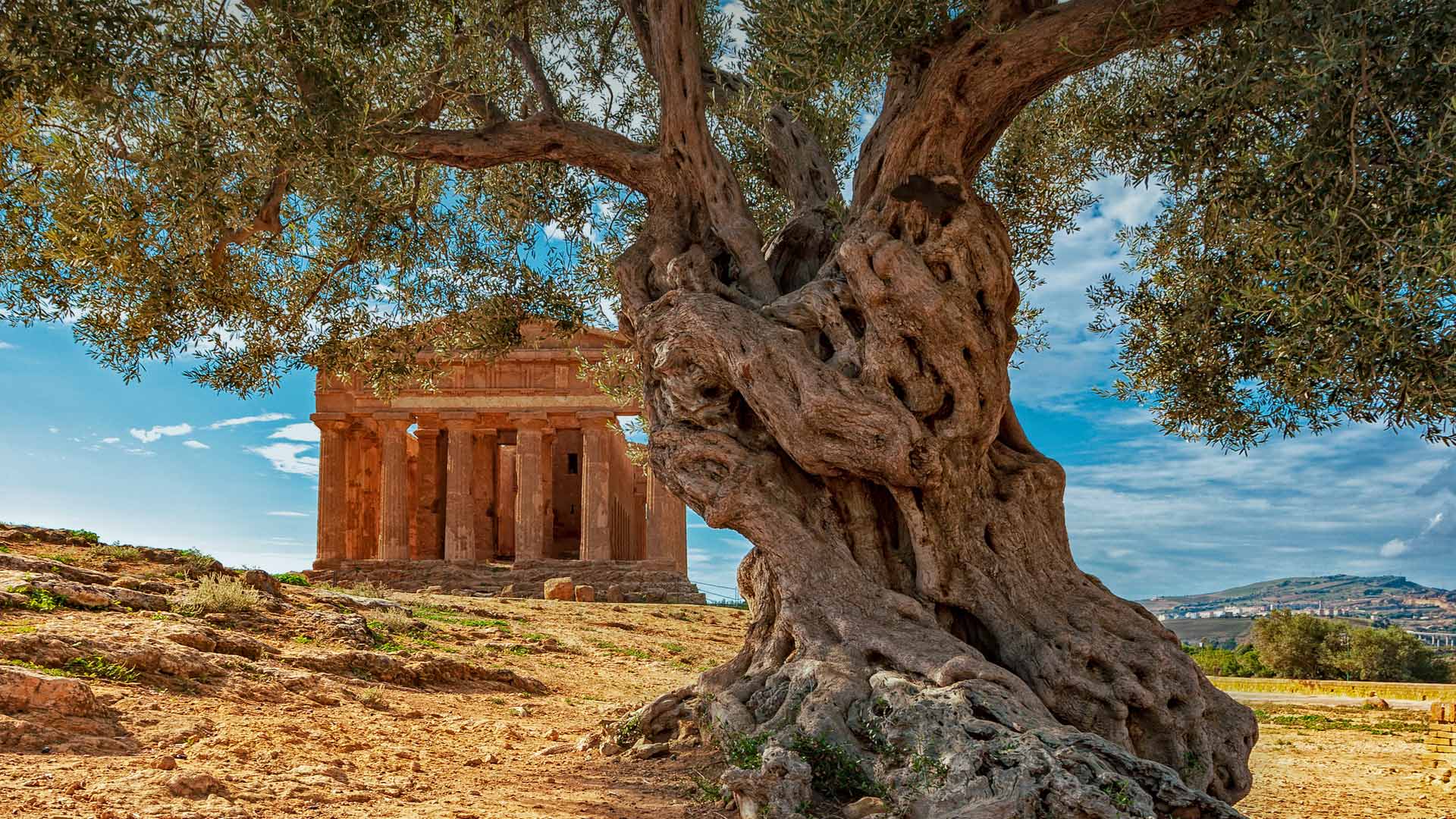
意大利西西里岛康科迪亚神庙前的一棵橄榄树 An olive tree in front of the Temple of Concordia on the island of Sicily, Italy (© Alfio Finocchiaro/Shutterstock)
和平的象征 A symbol of peace
世界橄榄树日
虽然不是每个人都会认为这是一棵橄榄树,但我们大多数人都理解“伸出橄榄枝”这句话的含义,这句话长期以来被称为和平与友谊的象征。这种同情、和谐和智慧的情感是联合国教科文组织于2019年设立的世界橄榄树日的核心,该日每年11月26日举行。该日的目的是让人们关注世界范围内冲突的解决以及橄榄树本身的保护,就像这棵站在意大利阿格里真托康科德亚神庙前的橄榄树。这座保存完好的希腊多立克神庙建于公元前440年左右的西西里岛南岸。橄榄树原产于地中海沿岸地区,如今在气候相似的地方种植,如加利福尼亚和以色列的部分地区。大约90%的收获橄榄被用来制作橄榄油,这是地中海烹饪的精华成分。
橄榄的种植与人类文明本身一样古老,一些树木本身也是如此。虽然橄榄树长得不高,通常不超过30英尺,但它们的寿命很长。葡萄牙是世界上已知最古老的树木之一,据信树龄为3350年。许多人活了几千年,树干长得又粗又多节,树枝一个世纪又一个世纪地结出果实。随着周围文明的兴衰,这些耐寒的树木依然顽强顽强。
World Olive Tree Day
While not everyone would recognize this as an olive tree, most of us understand the meaning of the phrase, 'extending an olive branch,' long known as a gesture of peace and friendship. That sentiment of compassion, harmony and wisdom is at the heart of UNESCO's World Olive Tree Day, created in 2019 and observed every November 26. The intent of the day is to bring attention to the resolution of conflict worldwide and to the preservation of the olive tree itself, like this one standing in front of the Temple of Concordia in Agrigento, Italy. The well-preserved, Greek Doric temple was built on what is now the south shore of Sicily, around 440 BCE. Olive trees are native to the coastal regions of the Mediterranean and are cultivated today in places with similar climates, like parts of California and Israel. About 90 percent of harvested olives are used to make olive oil, the quintessential ingredient in Mediterranean cooking.
The cultivation of olives is about as old as human civilization itself, as are some of the trees themselves. Although olive trees do not grow very tall, usually no more than 30 feet, they live a very long time. One of the oldest known trees in the world, in Portugal, is believed to be 3,350 years old. Many live for millennia, their trunks growing thick and gnarled, and their branches bearing fruit century after century. As civilizations rise and fall around them, these hardy trees remain resilient and steadfast.
哈特谢普苏特女王神庙鸟瞰图,埃及卢克索古城 Aerial view of the Temple of Hatshepsut near Luxor, Egypt (© Ratnakorn Piyasirisorost/Moment/Getty Images)
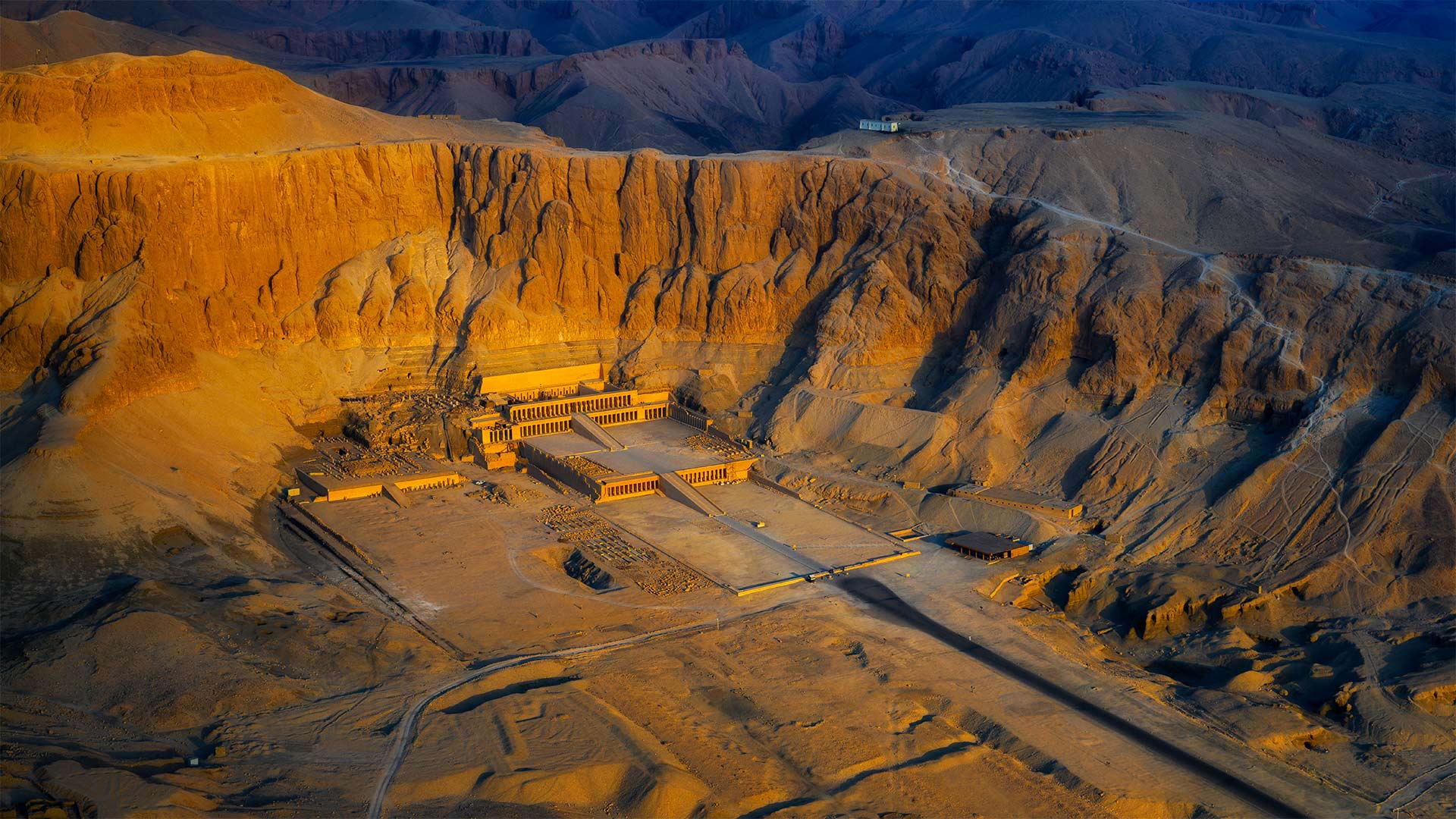
哈特谢普苏特女王神庙鸟瞰图,埃及卢克索古城 Aerial view of the Temple of Hatshepsut near Luxor, Egypt (© Ratnakorn Piyasirisorost/Moment/Getty Images)
Unearthing a queen's lost tale
Almost 3,500 years ago under Queen Hatshepsut's reign, Egypt enjoyed decades of peace and flourishing culture, and this elegant temple is just one piece of her larger-than-life legacy. But the pharaoh who succeeded Hatshepsut forbade all mention of her rule, taking credit for her monuments and leaving her name all but unknown for millennia.
By the 19th century, many archaeologists had noticed a gap in the recorded succession of pharaohs. Through their efforts decoding hieroglyphics, cataloging artifacts, and finally excavating Hatshepsut's great temple in 1906, the greatest woman ruler of her time began reclaiming her place in the history books.
Isn't it lucky we have people willing to dirty their hands and dig up the truth? On International Archaeology Day, which happens every third Saturday of October, we're celebrating those who solve human history's mysteries: the archaeologists of the past, present, and future.
发掘一个女王丢失的故事
大约3500年前,在哈特谢普苏特女王的统治下,埃及享有数十年的和平与繁荣的文化,而这座优雅的神庙只是她超越生命的遗产中的一部分。但是继承哈特谢普苏特的法老禁止任何人提及她的统治,因为她的纪念碑而受到赞扬,数千年来她的名字几乎无人知晓。
到了19世纪,许多考古学家已经注意到法老王的继承记录有一个缺口。通过对象形文字的解码,对文物进行编目,并最终在1906年挖掘哈特谢普苏特的大庙,这位当时最伟大的女统治者开始重新在历史书中占有一席之地。
我们有人愿意弄脏他们的手,挖掘真相,这不是很幸运吗?在每年十月的第三个星期六举行的国际考古学日,我们要庆祝那些解开人类历史之谜的人:过去、现在和未来的考古学家。
The interior of the Abu Simbel Great Temple in Egypt (© George Steinmetz/Getty Images)
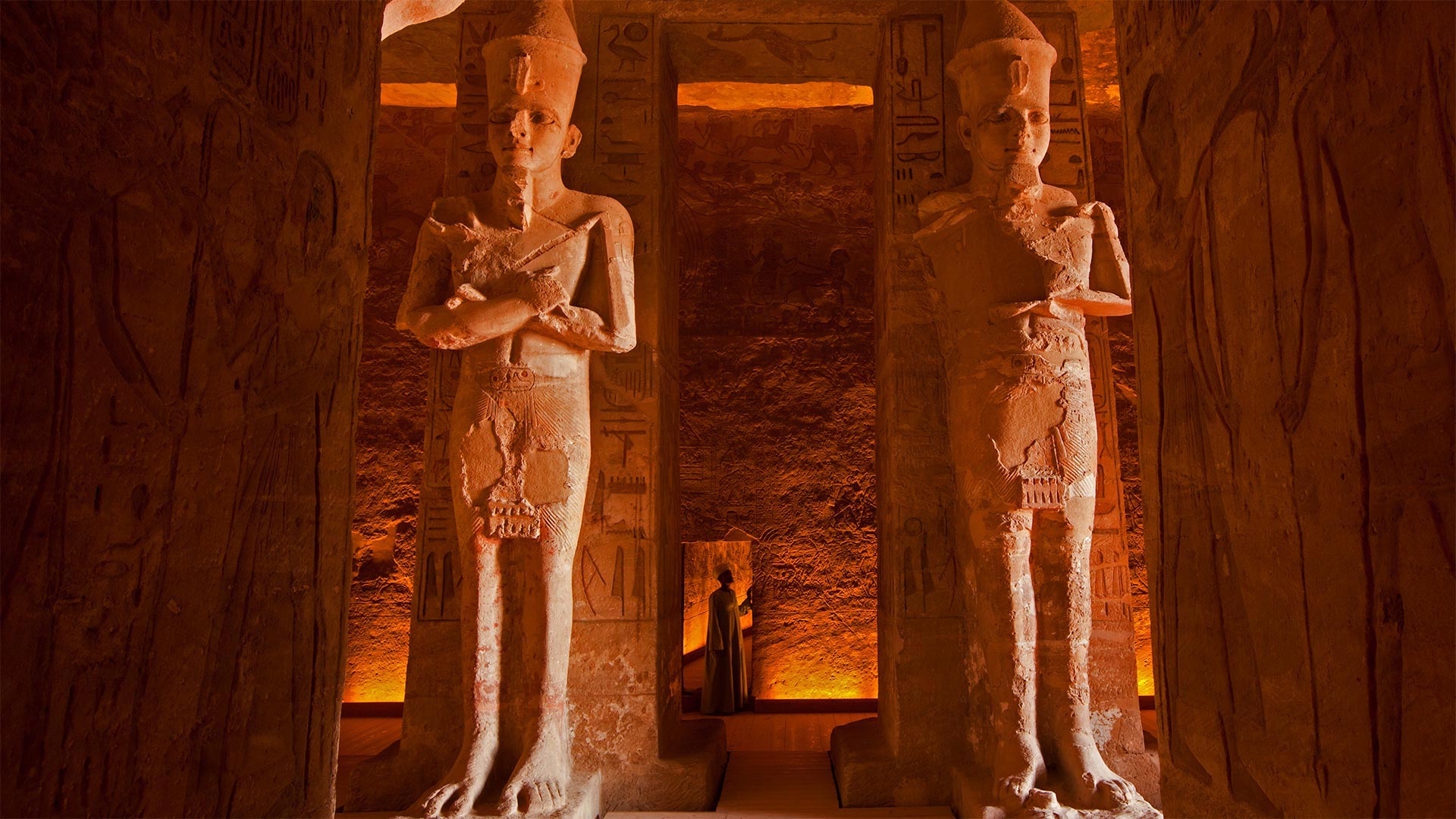
The interior of the Abu Simbel Great Temple in Egypt (© George Steinmetz/Getty Images)
A temple, preserved
These temples, commissioned by Egyptian pharaoh Ramesses II around 1264 BCE, would not be around for us to photograph if it weren't for the efforts of the United Nations Educational, Scientific and Cultural Organization (UNESCO). A couple centuries after the Abu Simbel temples were completed, Ramesses' empire had collapsed and the sands of the Nubian region of North Africa began to consume them. European explorers 'discovered' Abu Simbel in the early 1800s, leading to massive efforts to excavate and preserve the ruins of the great pharaoh's monument to himself.
But it wasn't until the 1950s, when the Egyptian government began drawing up plans for the Aswan High Dam, that preservation of Abu Simbel and other historic sites took on extra urgency. Planners knew the dam would flood the banks of the Nile, submerging the temples. So, the United Nations' UNESCO branch set to work on a solution to keep Abu Simbel preserved and accessible. In 1968, UNESCO's first major project was to literally move the massive temples to higher ground. They succeeded, of course, safeguarding one of the world's great archaeological sites. Out of this effort emerged UNESCO's drive to protect the world's most important sites of both cultural and natural heritage. To date, UNESCO has protected more than 1,000 World Heritage Sites across 167 countries that are ‘irreplaceable sources of life and inspiration.'
古罗马广场上的萨图尔诺农神庙,意大利罗马 Temple of Saturn in the Roman Forum, Rome, Italy (© Joe Daniel Price/Getty Images)
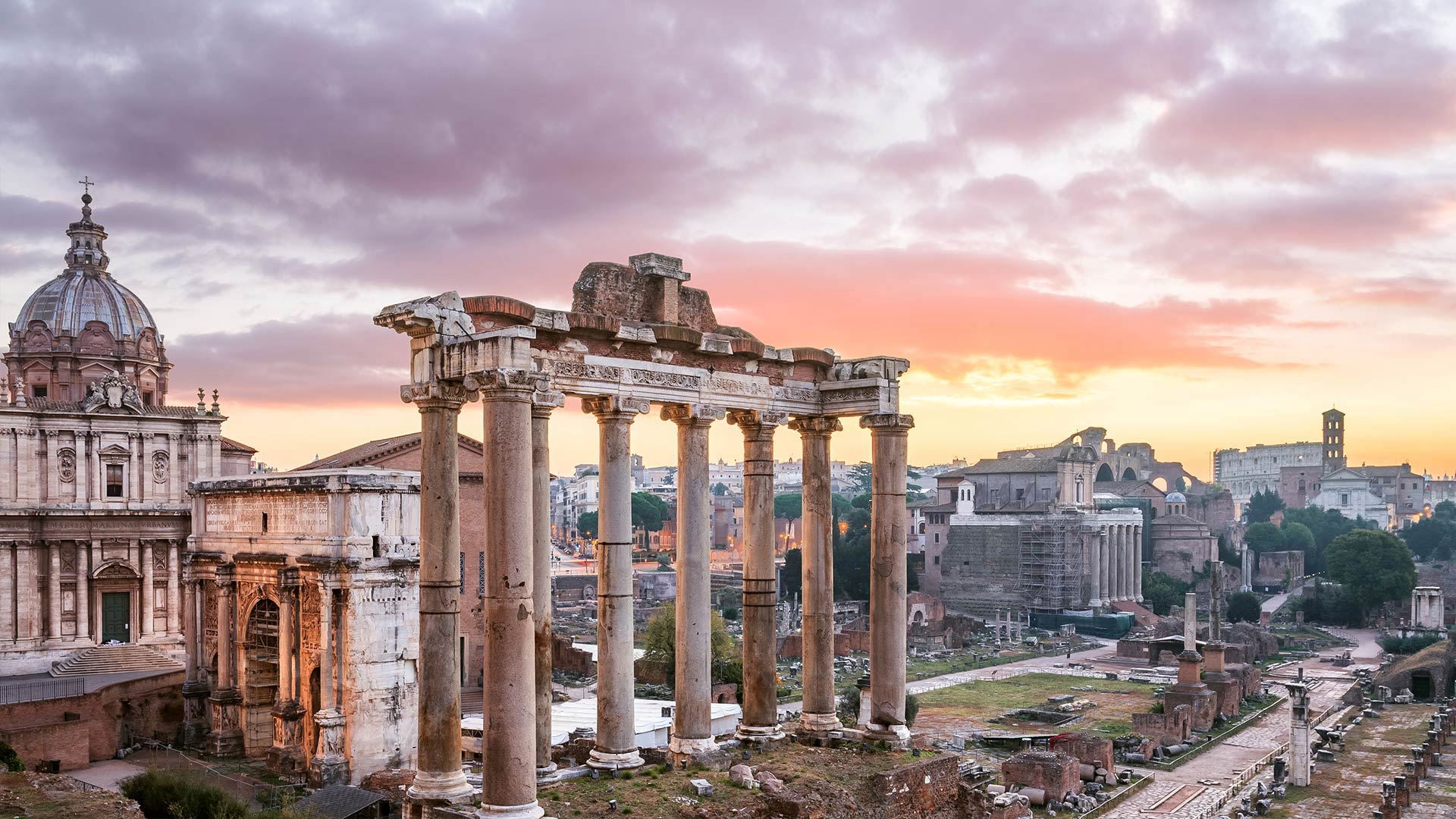
古罗马广场上的萨图尔诺农神庙,意大利罗马 Temple of Saturn in the Roman Forum, Rome, Italy (© Joe Daniel Price/Getty Images)
When in Rome...celebrate Saturnalia
We're looking at the Temple of Saturn, one of the oldest structures of the Forum in Rome. It was here that ancient Romans began their celebrations of Saturnalia, which began on December 17. Both the temple and the festival are dedicated to the agricultural god Saturn, whose reign was associated with a golden age of prosperity and peace. Saturnalia festivities kicked off with a sacrifice at the temple, followed by a public banquet and a week of general merrymaking. Activities included gambling, eating, drinking, and playing music. Businesses and schools closed, and even slaves were free from work and allowed to participate in the merrymaking. Many Saturnalia customs evolved into Christmas traditions, such as gift-giving, decorating homes with wreaths, and drinking spiced wine.
